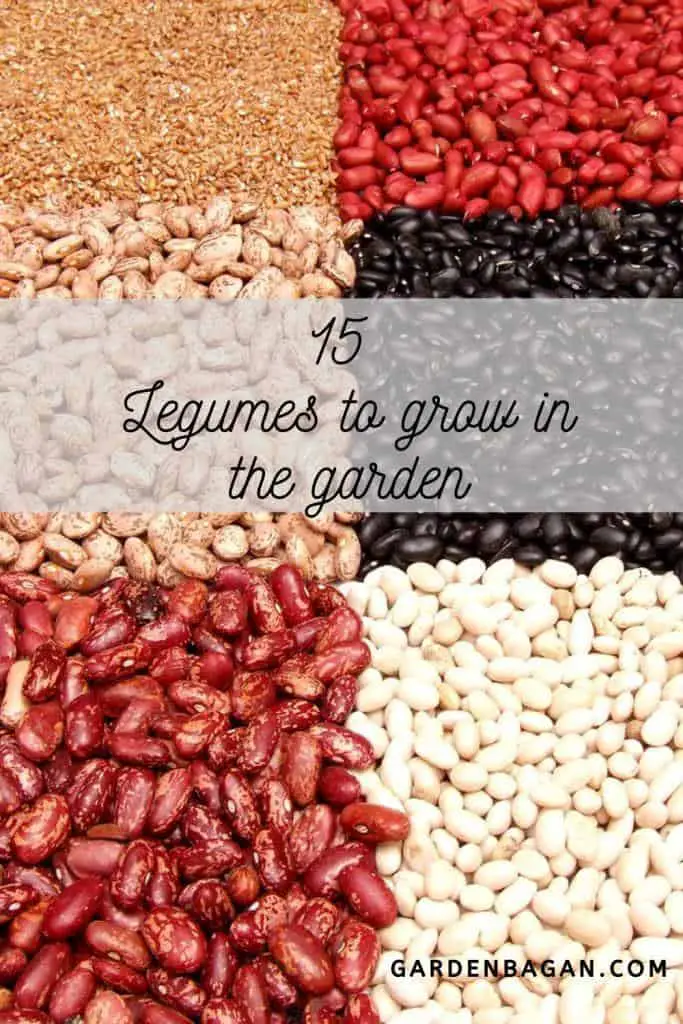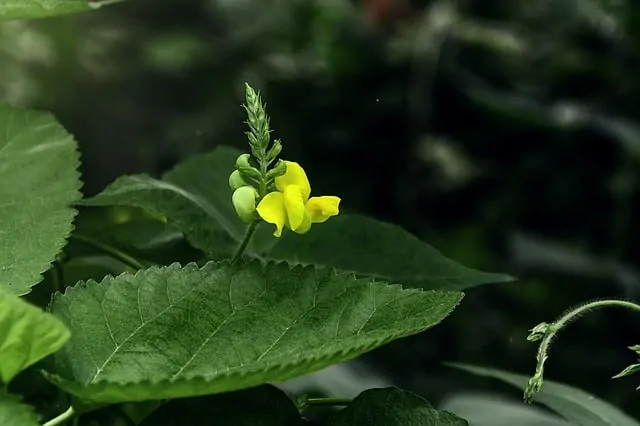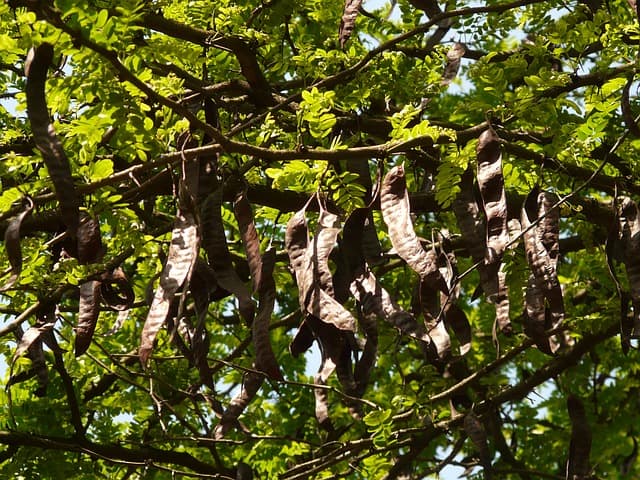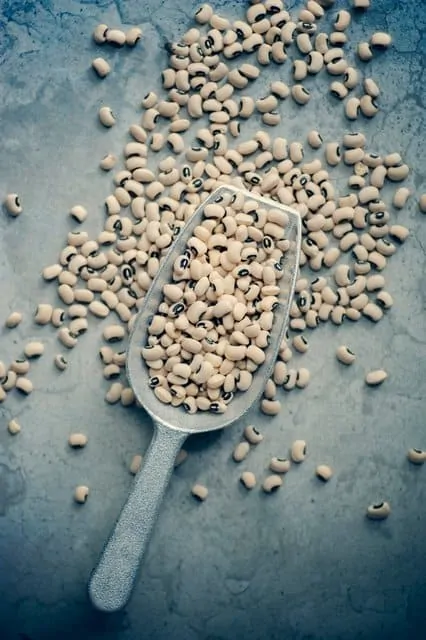Wheat, rice, and maize are known as cereals. Mung, beans, gram, pea, and other lentils are termed as legumes popularly known as pulses. Today we will discuss some of these legumes to grow in the garden.
A staple diet of any human being includes rice, pulses(dal), wheat, beans, etc. Have you ever wondered what are they and how they are produced. Keep reading for all those interesting details.
Legumes to grow in the Garden
- Alfalfa
- Clover
- Mung beans
- Black Gram
- Chickpeas
- Lentils
- Lupins
- Mesquite
- Carob
- Soybeans
- Peanuts
- Tamarind
- Jack bean
- Winged bean
- Black-eyed Pea
What are legumes?
Legumes are seeds or fruit of any plant in mature and dry conditions. They are known as pulses. These plants are especially known for their oil-bearing seeds.
Legumes are mostly produced for human consumption and to feed the livestock.
They are a great source of protein dietary fiber and carbohydrate. Legumes have been cultivated by humans for over 6000 years.
The roots of the legumes have nitrogen-fixing bacteria called Nitrosomonas which help to make the soil rich with nitrogen.
The name leguminous plant is especially given to plants having nitrogen-fixing bacteria.
Also, read my latest article on –11 Plants with Fibrous Roots- Know the Root System.
Can you grow legumes in the Garden? Yes, definitely you can grow some legumes in your garden. Some varieties can be grown even in containers on rooftops.
15 legumes that can be grown easily in your garden

Check out the details with the climatic conditions required for these legumes to grow in the garden effectively.
-
Alfalfa:
Alfalfa also is known as Medicago sativa. It belongs to the legume family which is cultivated in many countries to feed the livestock.
This plant can easily be grown at the soil temperature of 65 to 85 degrees Fahrenheit. If the temperature is lower than this the seeds may take a longer time to germinate.
It roots very quickly thus does not requires deep planting. Alfalfa grows well in well-drained soil rather than wet and heavy soil.
-
Clover:
It’s a flowering plant in the legume family and has over 300 species worldwide.
Seeds of the clover plant are planted after the last frost. The ideal soil temperature for clover is above 40 degrees Fahrenheit.
Its seeds are easily pollinated by the bumblebees. Out of its 300 species, several species are cultivated as fodder for animals.
If the plant is grown indoors it must be kept near a sunny location, it grows best in well-drained evenly moist soil.
-
Mung beans:
Moong or Mung is also commonly known as mung beans or green gram. It is a well-known member of the legume family. Mung beans are really one of the easiest legumes to grow in the garden.
It is commonly cultivated in the Indian subcontinent, East Asia and Southeast Asia. Now It is commercially grown worldwide even in the United States of America.
The green gram is popularly consumed as sprouts. The mung beans are germinated by leaving them in water for 6 to 8 hours in daylight and then in dark at night.
The ideal temperature required to grow mung bean is 27 to 30 degrees Fahrenheit. The seeds can thrive outside only when the minimum temperature is above 15 degrees Fahrenheit.
-
Black gram:
It is commonly known as urad bean and is popularly grown in the Indian subcontinent. The whole urad bean or black gram seeds are known as black lentils. Whereas the split urad seeds are known as white lentils.
This plant generally prefers dry climatic conditions where the temperature is around 25 to 30 degrees Fahrenheit to thrive. The humid and hot climate is considered ideal for growing this crop
It is widely used in cuisines of Punjab, Andhra Pradesh, and almost entire Indian states.
When immigrants migrated to Fiji, Mauritius, Africa, and the Caribbean they introduced black grams to the natives of these places.
-
Chickpeas:
Chickpea is an annual plant that belongs to the legume family and is well known worldwide.
It is also known as Bengal gram, garbanzo or garbanzo bean, Egyptian pea, chana, and chole. Chickpea is grounded and is used in making falafel. It is also an important ingredient for making chana masala and hummus.
India produces 67 % of total chickpea in the world and is an important ingredient of Indian, Middle Eastern and Mediterranean cuisines.
The ideal temperature required to grow chickpea is 70 to 80 degrees Fahrenheit during the day time and at night it should be above 65 degrees Fahrenheit.
Chickpea requires almost 100 days to mature in order to be harvested.
-
Lentils
Lentil is a bushy annual plant of the edible legume family. It is well known for its lens-shaped seeds which grow in pods.
In most of the cuisines of India split lentils are used and are consumed with rice or chapatti.
The ideal temperature required to plant the lentil seeds is 68 degrees Fahrenheit. Usually, the lentil seeds germinate after 7 to 12 days of sowing into the soil.
Lentils prefer cool climatic conditions but not frost and require 80 to 110 days to mature in order to be harvested.
Lentils have been classified as
- Split or whole
- Shelled or unshelled
They can grow in almost any type of well-drained soil. The lentil plant cannot tolerate water clogged conditions and flooding.
-
Lupins:
It is a flowering plant of legume family with over 200 species. Lupins are mainly found in North and South America and are also found in the Mediterranean.
It is cultivated both for food and ornamental purposes. The seed pod of the lupin is known as lupin beans.
It is used to make a variety of sweet and savory food items. Lupin is also used for making a sauce.
Its seeds need exposure to cool temperatures to develop their roots. Lupin can attain up to 4 feet of height depending on its variety.
These plants help to increase the nitrogen of the soil. You can easily grow little greens along with lupins.
Lupin is one of the most preferred flowering legumes to grow in the garden.
-
Mesquite:
Mesquite is a name used for over 40 small leguminous trees. So if you have little space then you can grow it in your garden.
It is mainly found in Mexico and the southwestern United States. The tree of mesquite blossoms from spring to summer and produces fruits which are called pods.
These pods are then dried up and grounded to make flour for the preparation of the bread.
The ideal soil temperature requires to plant mesquite seeds is 77 degrees Fahrenheit. The seeds grow and thrive fastest when the soil temperature is 80 to 90 degrees Fahrenheit.
Always careful with the temperature coz when the temperature rises to just 5 degrees Fahrenheit the growth of the seedling slows down.
The plant needs moist soil for at least 3 to 5 days after germination.
-
Carob:
Carob is a flowering shrub and a member of the legume family. It is cultivated for its pods which are edible. Carob is also used for ornamental purposes.
The ripe and dried pods of carob are grounded for getting carob powder. In earlier days, it was used as a substitute for cocoa powder.
Carob is a drought-resistant plant and can grow in completely dry soil. Its seeds thrive and germinate at soil temperature between 22 to 26 degrees Celsius.
-
Soybeans:
It is the most widely grown edible variety of beans. Apart from been consumed as a seed, it is also grown for edible oil.
The oil is extracted and sold as soya bean vegetable oil- It is widely used for cooking purposes. It contains various dietary minerals and vitamin B.
The ideal temperature of the soil to plant the soya seeds is 55 to 60 degrees Fahrenheit.
The proteins present in soybean are a good substitute for the proteins acquired from animals. It is globally produced for its oil and protein.
-
Peanuts
Peanut is also known as groundnut or monkey nut. It is an edible seed belonging to the legume family.
It is widely produced by small as well as large cultivators. Due to its high oil content, it is considered as an oil crop.
High-quality edible oil is extracted and sold as groundnut soil.
Seeds of peanut thrive well in warm temperature and can also survive frosty climatic conditions
The peanut grows well in temperature range 70 to 80 degrees Fahrenheit. It can also grow in a low winter temperature of -15 degrees Fahrenheit as it is tolerant to frost.
It has a long growing season ranging from 100 to 150 days without frost. Peanut requires well-drained soft and light soil to grow.
It grows best in United States, Texas, Alabama, Florida, North Carolina, South Carolina, Mississippi, Virginia, Oklahoma, and New Mexico. Commercially it is grown worldwide.
-
Tamarind
It is an edible fruit-bearing plant of leguminous family. It has a pod-like fruit that contains pulp inside it. This pulp is edible and is used in various cuisines. Tamarind is also used for various medicinal purposes.
The wood of the tree is used for woodworking and its seeds are used to extract oil.
Even the tender leaves of the tamarind plant are also used in various Indian cuisines. It is grown worldwide in tropical and subtropical regions due to its several uses.
Do you know which are the largest producer as well as consumer of tamarind? It’s India. Yes, India is the largest producer as well as consumer of tamarind
As this tree grows in tropical and subtropical regions it prefers a dry and windy climate to thrive.
The young tamarind plants cannot tolerate cold whereas adult trees thrive best till the temperature of 228 degrees Fahrenheit.
Can you grow tamarind in the garden? No, you can’t it is a big tree and requires a lot of space. But you can grow tamarind as a bonsai in a pot or containers.
-
Jack bean
Canavalia ensiformis is commonly known as jack bean. It is a leguminous plant that is cultivated for animal fodder and human nutrition.
The plant of jack bean is shade tolerant and requires a temperature of 57 to 81 degrees Fahrenheit.
The beans are mildly toxic and are boiled to remove the toxicity. The young foliage is also edible and is used as the fodder for animals.
Usually, It is not recommended as a plant to be grown in the garden. It can grow to over 2 meters high and requires rich soil, sun, and warmth to thrive the best.
-
Winged bean
It is also known as the goa bean, four-angled bean, four-cornered bean, Manila bean, princess bean, cigarillos, asparagus bean, dragon bean, and many other names in different languages.
It is grown in equatorial places with a hot and humid climate.
A fun fact about Winged bean is that it is widely known but really cultivated on a very small scale.
It is a nutrient-rich plant and can be consumed entirely. The leaves of winged beans are consumed like spinach. The seeds inside the pod are green and round. You can cook and eat it with some salt and pepper.
It has got its name from its winged pods. It grows like a vine with its climbing leaves and stems.
The ideal temperature required to germinate the seed is 77 to 85 degrees Fahrenheit.
-
Black-eyed pea
Black-eyed pea is also known as goat pea. It is a pale-colored legume with a prominent black spot.
Natively it was grown in the southern United States but slowly and gradually became popular worldwide.
The ideal temperature required to grow black-eyed pea is between 60 to 75 degrees Fahrenheit.
It takes almost 10 days for the seeds to germinate. It is a summer crop thus its seeds need to be planted in spring. Planting of this crop adds nitrogen to the soil and has high nutritional value.
These are the different types of legumes that can be grown in the garden and can serve the variety of needs of the cultivator.
Fun fact:
Do you know how long can the bean pod grow?
The world’s largest bean pod can grow up to 5 feet long.
Isn’t it amazing?- Keep reading GardenBagan for more interesting facts. Do share your views and ideas with us. Especially if you have grown any of these on your own. Write back if you know some more legumes to grow in the garden.
Happy Gardening – Live the Green!
Content Reference:- Wikipedia













